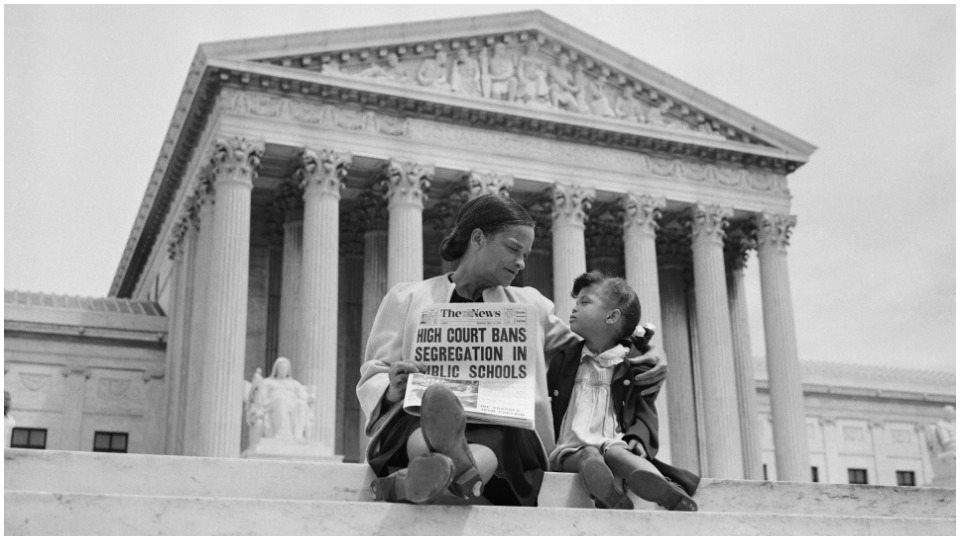
How much progress have we made in getting racism out of our schools since the Supreme Court decision in Brown vs. Board of Education? In 1954, our highest court ruled, “Separate educational facilities are inherently unequal.”
Clearly, that was a great victory. Yet today, in many of our nation’s cities, schools remain highly segregated. In former Chicago Mayor Rahm Emanuel’s notorious closing of about 50 public schools in 2013, for instance, most were in communities of color. In that city alone, 1,500 teachers and staff were fired in late 2016. In state after state, the racist threat to public education is increasing.
The good news is that the fightback against racism in the schools is rising, often led by the students themselves. Some of the most recent in Chicago were student strikes against the teacher layoffs. Massive protests around “Black Lives Matter” in the past few years and the opposition to Trump after his election are inspiring students and stepping up the pace of resistance.
These actions bring to mind the protests of the 1960s and 1970s by African-American and Latino students. Many victories were won. College doors began to swing open; African-American Studies, Latino (Hispanic) Studies, and Women’s Studies were all added to the curriculum in a number of colleges and high schools. Textbook publishers became willing, even anxious to add multicultural content to their offerings.
Whatever happened since the 1980s that we no longer hear of multicultural education? The need to remove racism from the school curriculum is rarely discussed. The turn away from multiculturalism got so bad that I refused a contract as multicultural consultant for a leading high school textbook publisher.
Curriculum may seem like a back burner issue in the face of school closings and the urgency of the Trump administration’s outrages. However, it is important to remember that curriculum determines what all of our teachers teach and what all of our children learn in school every day. Here’s testimony from Emily E. Smith, a white teacher who changed her curriculum in response to her students:
“During a classroom discussion, one of my kids bluntly told me I couldn’t understand because I was a white lady. I had to agree with him… My curriculum from then on shifted… We studied the works of Sandra Cisneros, Pam Muñoz Ryan, and Gary Soto, with the intertwined Spanish language and Latino culture—so fluent and deep in the memories of my kids that I saw light in their eyes I had never seen before. We analyzed Langston Hughes’s ‘Let America be America Again’ from the lens of both historical and current events and realized that the United States is still the land that has never been.”
Shouldn’t white students also be reading these authors? Far from gaining from a racist curriculum, white students also lose out when authors of color are left out of their studies.
How did racism gain such a hold on European and North American school curricula? Some claim that racism has always been with us, but I think that they are mistaken.
The racist claims of superiority in modern times appear with the European invasion and colonizing of Africa, Asia, and the Americas. That was the time that European slave traders were depopulating Africa to set up slave-based economies in the Americas. The colonial invaders were Europeans (white) who had the power to exploit and oppress other peoples who happened to be brown or black. The claim of white superiority—white racism—was and still is based on power and exploitation.
As late as the 1700s though, Europeans had an appreciation of what they had learned from the older civilizations of Egypt, Iraq, Persia, India, and China. But that changed as slave-based agriculture in the Americas began to supply European textile mills and fatten up banks on both sides of the Atlantic. A massive re-writing of history took place.
In the racist version of history now taught in our schools, civilization supposedly began in Europe with the ancient Greeks. Then the fall of Greece in 416 CE sent Europe into what is called the “Dark Ages.” If you follow this narrative, you would have to believe that the human race made no progress of any kind until the Renaissance (1350-1550) and that the “Arabs” (a term which actually included people of Central Asian, African, Arab, and even Hebrew origin) contributed nothing new. Luckily, contra the racist storyline, the “Arabs” of the so-called “Dark Ages” had preserved the Greek books of learning. So Europe was once more able to pick up where Greece had left off.
The motivation for this drastic rewriting of world history is obvious. Otherwise, how could the upright, pious Christian slave owners and slave traders justify their horrible crimes? They had to describe the people they were oppressing as inferior, less than human. No way could they admit that European civilization is based on civilizations created by the peoples they were enslaving.
How much more interesting would it be for our young people if they were exposed to the perspectives and contributions of all those who have been left out? Consider, for example, American history classes. They often emphasize memorizing names and dates of presidents, battles, and so on. Think of how different it would be to learn about the lives of Europeans shipped to the Americas as indentured servants, of enslaved Africans, or of the indigenous people who were forced off their lands.
Or consider the math curriculum—what does racism have to do with that, one might ask? Plenty, as it turns out. We were all taught that mathematics began in Greece with Pythagoras and his right triangle theorem. If you go back to Iraq, 1900 BCE, you would find mathematicians were already using the theorem. Go back even 800 years earlier to the Great Pyramid in Giza, which covers several football fields yet has perfect right angles at every corner. It just shows that people knew about the right triangle theorem more than twenty-two centuries before Pythagoras was born. The early Greeks admitted that they got their geometry from Egypt. Euclid himself lived there, and the very word, algebra, is an Arabic one. So even mathematics can be approached from a multicultural perspective.
Much could also be said about the natural science curriculum. Just consider the science that went into developing the foods that feed the human race. Weeds did not turn themselves into rice, wheat, maize, potatoes, beans, and the many basic foods that sustain us. It took hundreds or thousands of years of numerous peoples’ scientific practices. When Monsanto changes one tiny gene and patents it, they charge farmers for using it—although it is often those same farmers who bred the grain by selecting among hundreds of genes. A multicultural science curriculum would educate students to appreciate the scientific thinking of the Native Americans, West Africans, East Asians, Anatolians, and other people of color who bred most of our basic food plants.
For labor activists and other progressives, this racist rewriting of history, math, and science should come as no surprise. As we know, history lessons, as taught in the schools, leave out most of labor history and other protest movements. The same thing has been going on in all the other subjects too, and in some of them, perhaps for an even longer period of time.
So in addition to fighting back against school closures and the firing of teachers, it is important to keep the struggle for an anti-racist, multicultural curriculum front and center. A working definition of such a curriculum is one that includes the contributions of all the people who have been left out—people of color, women, and working people. Then the school curriculum would be not only more truthful but a whole lot more interesting as well.










